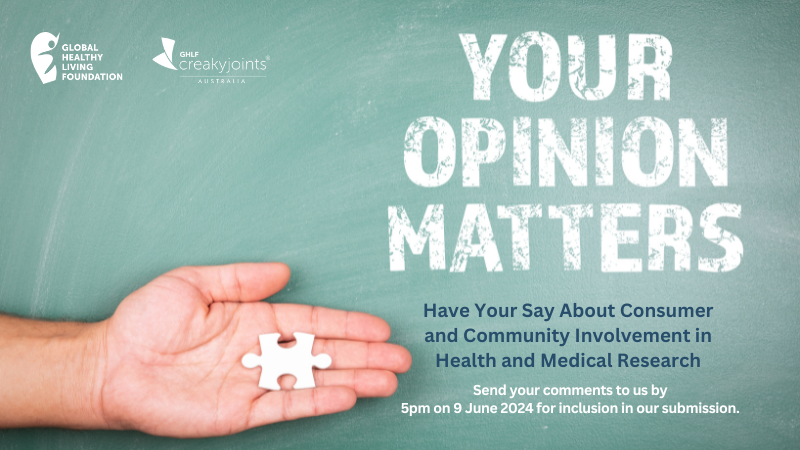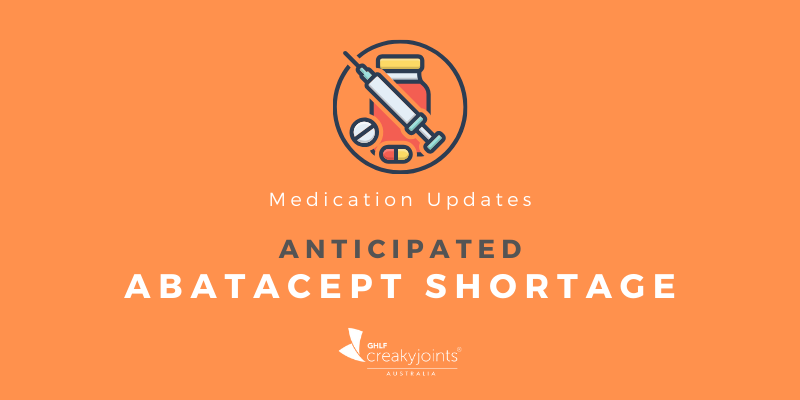National Diabetes Week runs from 14 to 20 July. This year’s campaign theme is “It’s about time”. That means it’s about time we took the time to learn the early warning signs of type 1 diabetes. It also means it’s about time we took the time to get checked for type 2 diabetes and to learn about the links between diabetes and arthritis.
According to Diabetes Australia, around 1.8 million Australians have diabetes. This includes all types of diagnosed diabetes (1.3 million known and registered) as well as silent, undiagnosed type 2 diabetes (up to 500,000 estimated). 290 Australians develop diabetes every day. That’s one person every five minutes.
What is diabetes?
Diabetes is a serious condition that occurs when glucose levels in the blood become unhealthy. Glucose is a form of sugar and we rely on it as our main source of energy. It comes from the food we eat — not just sweets, but also carbohydrates and other foods.
Insulin is a hormone made by the pancreas. It helps convert the glucose into a form of energy that can be sent to the cells throughout our body. Sometimes, our insulin production slows — or stops — or our bodies don’t use it effectively.
When this happens, glucose builds up in the bloodstream and doesn’t reach the cells. No energy supply to the cells means they struggle to function properly. We use up what little energy we have just keeping our vital systems working, with little left over for anything else. We also become hungrier as our bodies cry out for more energy.
Being thirsty and needing to pee more are also early symptoms of diabetes. Normally, the body reabsorbs glucose as it passes through the kidneys. However, when blood glucose levels are high, the kidneys may struggle to draw the glucose back. This leads the body to make more urine. For that, it needs more fluids which then need to be eliminated.
If blood sugar levels go unmanaged, it can lead to serious symptoms. For example, nerve damage, heart and lung problems and blindness to name a few.
Causes and Types of Diabetes
There are three main categories; type 1, type 2 and gestational. They have no common cause. Instead, they are influenced by factors such as genetics, family history, health and the environment.
- Type 1 diabetes is an autoimmune condition that destroys insulin-producing cells in the pancreas. It can’t be cured or prevented and affects people of all ages.
- Type 2 diabetes is a progressive condition in which the body either loses the ability to produce insulin or it becomes resistant to its effects. It has no definite cause, but can be triggered by modifiable lifestyle and genetic factors. It can also be triggered by some medications.
- Gestational diabetes occurs in around 12 to 14 per cent of pregnancies. Hormonal changes during the pregnancy block the action of the mother’s insulin. It can be well managed and usually goes away after the baby is born.
Links Between Diabetes and Arthritis
Although diabetes and arthritis are two separate conditions it is possible for one to lead to the other.
Immune system connections
Rheumatoid arthritis and type 1 diabetes, for example, are both autoimmune conditions. These are conditions that occur when the immune system malfunctions and starts to attack cells in the body. In rheumatoid arthritis and other forms of inflammatory arthritis, it attacks the joints or surrounding tissues. In type 1 diabetes, it attacks the cells within the pancreas.
Once you have one autoimmune condition, you have an increased risk of developing others. Genetic and hormonal factors may play a role here, but more research needs to be done.
Lifestyle connections
Arthritis and diabetes can both lead to people being less mobile. This, in turn, can lead to obesity. Obesity itself can also contribute to immobility. Being overweight and not exercising enough puts more strain on your joints and can lead to osteoarthritis. Obesity can also be a contributing factor to gout.
It works the other way, too. Diabetes can lead to many long-term musculoskeletal changes, including joint pain and stiffness, trigger finger and diabetic hand syndrome.
Drug-induced diabetes
Some medications, such as statins, beta-blockers and corticosteroids (cortisone, prednisolone), can raise blood glucose levels. Taken over long periods, especially on high doses, they can cause drug-induced diabetes. There is no way to know for sure if or when this might occur.
Many people with autoimmune arthritis rely on cortisone to help manage their symptoms. It can be tricky to find the lowest possible dose of cortisone to take over the shortest period of time. Being on cortisone for weeks or months is unlikely to have a long-term effect on blood sugar, but being on it for years might.
In some cases, diabetic symptoms might go away after the medication is reduced or ceased. However, some people may develop type 2 diabetes permanently.
What Can You Do to Help Prevent Diabetes?
The National Diabetes Week campaign encourages us all to look out for warning signs of diabetes.
- For type 1 diabetes, this means taking the time to learn the 4Ts (toilet, thirsty, tired, thinner) — the early warning signs of type 1 diabetes.
- For type 2 and gestational diabetes, it is important to be aware of your risk factors and address them early. Type 2 diabetes often has no early symptoms so awareness and prevention are especially important.
- If you are on a medication that may lead to diabetes, please talk to your treating doctor about your personal risks versus benefits as we are all different.





